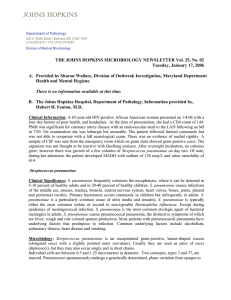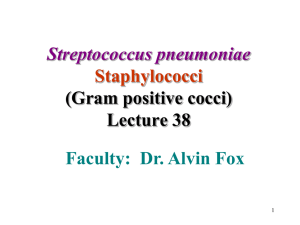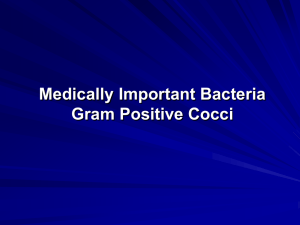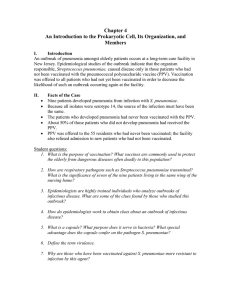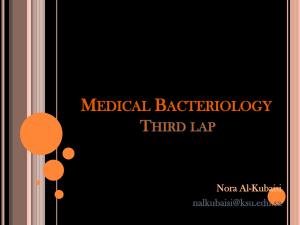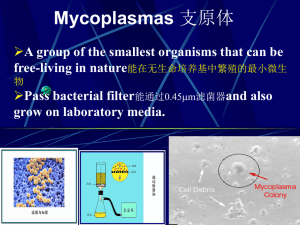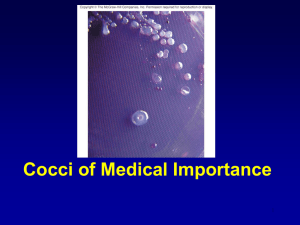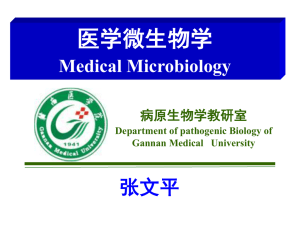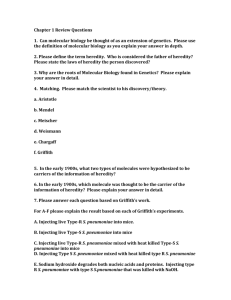Streptococcus pneumoniae
advertisement
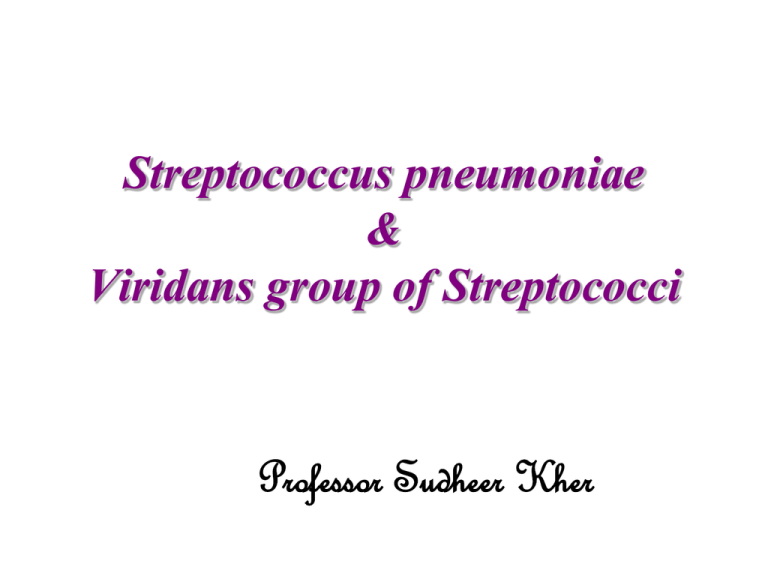
Streptococcus pneumoniae & Viridans group of Streptococci Professor Sudheer Kher KEY WORDS • • • • • • • • • • S. pneumoniae diplococci Pneumococcus autolysin bile solubility test optochin susceptibility capsule Quellung reaction Inulin fermentation Mouse pathogenecity Viridans group of Streptococci • Viridis = Green • Throat commensals, can cause opportunistic infections. • ά - Haemolytic on blood agar. • Species – S. mitis, mutans, salivarius, sanguis. • Tooth extraction – Transient bacteremia leading to implantation on damaged/prosthetic heart valves – Commonest species - sanguis. • Dental caries - Commonest species – mutans. S. pneumoniae Important features • Gram + , Lanciolate, capsulated diplococci Important features • Aerobes & facultative anaerobes. Growth improved by 5-10 % CO2 • Colonies on BA –ά - Haemolytic, dome shaped later showing flat and concentric ring pattern (carrom coin) • Mucoid appearance Important features • Catalase & oxidase negative • Bile soluble • Inulin fermentation • Optochin (ethyl dihydrocuprein) sensitive • Pathogenic to mice Antigens • Most important – Type specific capsular polysaccharide also called SSS (specific soluble substance). More than 90 serotypes detected. • Typing methods – – Agglutination – Quellung reaction – Precipitation for SSS S. pneumoniae • leading cause of pneumonia – particularly young and old – after damage to upper respiratory tract *e.g. following viral infection • bacteremia • meningitis • middle ear infections (otitis media) • Sinusitis, bronchitis, eye infections. S. pneumoniae • ά - hemolytic • pneumolysin – degrades red blood cells under aerobic conditions • grows well on sheep blood agar • no group antigen Diagnosis - spinal fluid • direct Gram staining • detection of capsular antigen Autolysis - identification autolysin teichoic acid -choline peptidoglycan cell membrane lipoteichoic acid Bile C polysaccharide • Teichoic acid – Precipitates in serum – C-reactive protein – An abnormal protein (β-globulin) that precipitates with somatic C antigen of pneumococci appears in acute phase sera in pnemonia and disappears in convalescence. Also occurs in many other pathological conditions. This is called CRP or acute phase protein. • Used to monitor response to treatment in various conditions like rheumatic fever and is replacing ESR. Identification Not optochin sensitive optochin sensitive Capsule • prominent – virulent strains • anti-phagocytic • carbohydrate antigens – vary among strains Capsule • immunity – serotype specific • vaccine contains multiple serotypes • only for susceptible population Quellung reaction • using antisera • capsule "fixed" • visible microscopically Pathogenesis • Teichoic acid – complement activation – large numbers of inflammatory cells at infection site Therapy • S. pneumoniae – most strains susceptible to penicillin – resistance is uncommon but known (5%) – Third generation of cephalosporin or Vancomycin Prophylaxis • Polyvalent polysaccharide capsular antigens of 23 most common serotypes given to population at high risk – – – – – Absent/dysfunctional spleen Sickle cell disease Coeliac disease Chronic renal/lung/heart/liver disease NOT given to children < 2yrs, immunosuppression / deficiency, lymphoreticular malignancy Differences between Viridans Gp & Pneumococci Point Morphology Quellung test Pneumococci Capsulated, lanceolate, diplococci + Viridans Gp Oval or rounded in chains - Colonies Dome shaped Draughtsman Dome shaped Growth in liquid Uniform turbidity Granular turbidity with powdery deposits Bile solubility + - Inulin fermentation + - Optochin sensitivity + - Intraperitoneal inoculation in mice Fatal Infection Non-pathogenic KEYWORDS • • • • • • • • • • S. pneumoniae diplococci Pneumococcus autolysin bile solubility test optochin susceptibility capsule Quellung reaction Innulin fermentation Mouse pathogenecity
